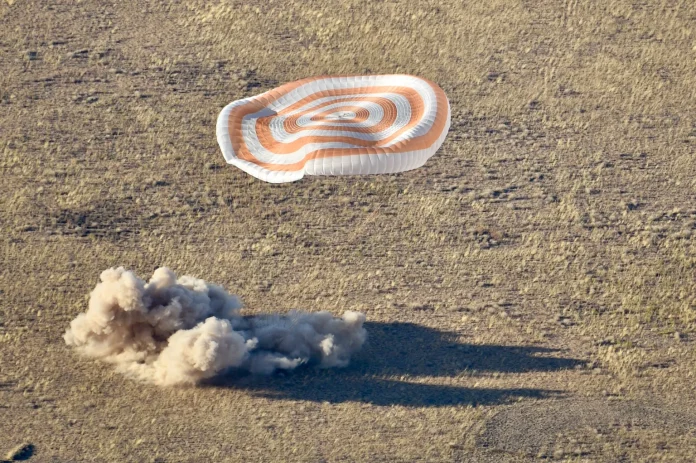NASA astronaut Tracy Dyson has returned to Earth aboard a Russian Soyuz M-25 spacecraft. Dyson, along with Russian astronauts Oleg Kononenko and Nikolai Chub, landed safely on Monday after departing the International Space Station (ISS), US media reported.
The capsule carrying the three astronauts landed on the wide plains of Kazakhstan, marking the end of their mission. Astronaut Dyson’s return on a Russian Soyuz M-25 spacecraft comes amid growing tensions between the US and Russia. Boeing also failed to return two other NASA astronauts, Butch Wilmore and Sunita Williams, who were stuck in space due to technical problems.
After undocking from the ISS, the Soyuz capsule landed about three and a half hours later, completing a smooth descent. It descended under a red-and-white parachute at about 16 miles per hour on the final stage, and small rockets were fired just before landing to soften the impact.
After landing, the astronauts were helped out of the capsule and seated in nearby chairs to help them get used to gravity. They then underwent a medical check-up in a nearby tent to make sure they were in good health. Steve Stich, NASA’s commercial crew programme manager, said:
“It’s been a journey to get here, and we’re excited to have Starliner come home.”
Problems in space
Wilmore and Williams remain on the space station along with six other astronauts. Their return to Earth has been delayed well beyond the original plan. The pair arrived at the station in June aboard Boeing’s Starliner capsule, but engine problems and a helium leak delayed their return home. NASA later deemed it too dangerous to return on the Starliner. Wilmore and Williams are now scheduled to return to Earth next year on a SpaceX spacecraft.
Earlier this month, Boeing’s Starliner capsule returned to Earth without Wilmore and Williams on board. The capsule, operating in autopilot mode, successfully landed at White Sands Missile Range in New Mexico on September 7, six hours after departing from the ISS.
